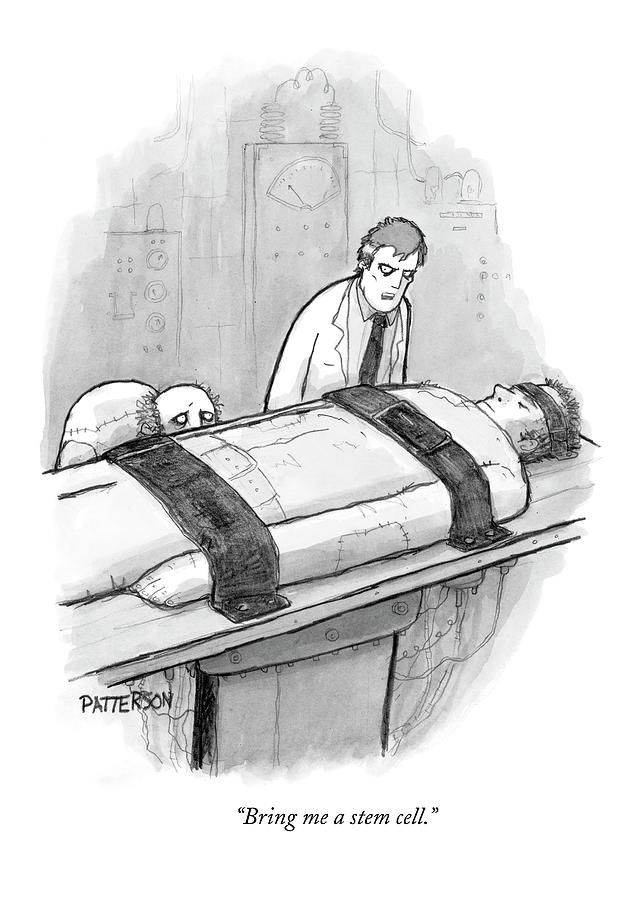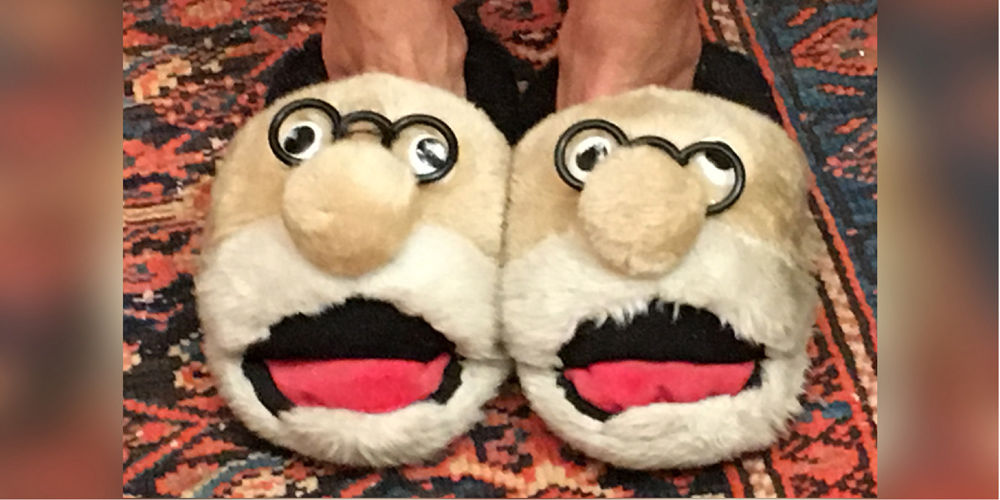I’m standing in front of a heavy brown door with a small window at eye level. It’s not like a prison door or the doors continuing down the hospital hallway. Instead, this door has a comic from The New Yorker taped to the frame. The comic shows a monster on a table, a humpbacked assistant, and Dr. Frankenstein making a request: “Bring me a stem cell.” Already, I like the person on the other side of the door.
 As a nurse administrator, I try to visit patients on Huntsman Cancer Institute’s Blood & Marrow Transplant unit (BMT) once a week. While rounding with Shirleen Gamonal, the unit’s manager, I take my time getting to know patients, families, and staff a little better. It’s my favorite part of the week. Double-booked meetings and an overflowing inbox can only be balanced by time on the front lines.
As a nurse administrator, I try to visit patients on Huntsman Cancer Institute’s Blood & Marrow Transplant unit (BMT) once a week. While rounding with Shirleen Gamonal, the unit’s manager, I take my time getting to know patients, families, and staff a little better. It’s my favorite part of the week. Double-booked meetings and an overflowing inbox can only be balanced by time on the front lines.
I peek through the shades of the small window and see a tidy room with a hairless patient sitting in a chair next to the bed. I often think about the hairlessness of the patients I visit. It’s more than just baldness. The mixture of vulnerability, determination, and courage that can radiate from a cancer patient is amplified without a layer of hair. It’s a very powerful image.
Knocking on the door and asking permission to enter, I first notice the slippers. I’m used to seeing teddy bear-adorned, sports-themed, and brightly colored slippers—anything to keep feet warm, brighten a day, and define a personality. But this patient’s slippers have crazy white hair, glasses, and a big nose, immediately recognizable as famed psychoanalyst Sigmund Freud .
Over the years, I have perfected the art of walking into a room cold, without a clinical reason to be there. As I introduce myself, I look for a way to connect with the patient or family member in the room—pictures, quilts, or an obvious sign of distress. Today, I choose the slippers and ask about their significance.
As I hoped, this produces an immediate smile. It takes energy to smile when you’re fighting for your life. I’ve heard that old adage about how it takes more muscles to frown than smile. I’d like to see the data on that research. I suspect the psychological energy needed isn’t factored into the equation. Smiling is exhausting for a transplant patient. On this unit, I don’t take smiles for granted.
Along with the smile comes an answer from the patient: “These are Freudian slippers.” I return the smile and try to come up with a “Freudian slip” of my own, but my mind isn’t quick enough and I settle for simple conversation. She tells me about the website where a friend acquired the slippers. I learn about her dedicated husband bringing in food every day. Life could be worse, she says. She has her support team.
Tied to the bed is a Mylar “Happy Birthday” balloon given to all transplant patients the day they receive their stem cells. This patient’s balloon has lost some air and looks a little wrinkled; still, it’s very much afloat.
This tells me it’s been at least a week since the staff sang our “Happy Birthday” song. In that week, life has gotten more difficult for this patient. Very soon, a miracle will take place and her stem cells will engraft and give birth to new blood cells. For now, mouth sores, diarrhea, and opportunistic infections all knock at her door.
I ask my usual questions:
- "Are we treating you well?”
- “Are we paying attention to the little things that make a big difference?”
- Most important, “Do you feel safe here?”
These questions are important. Our patients are physically and emotionally vulnerable. It’s overwhelming to think of all the potential “bad things” that can happen following a transplant. I seek the truth, but we are human. As a rule, patients hesitate to complain. Today, this patient is simply exhausted and appreciative of the nursing care.
Over the next several weeks, her slippers and her resilience prevail through the bumpy road of stem cell therapy. I never think of a comment to slip into conversation that could complement the slippers. Honest communication is required even when humor is appreciated. Still, she does well after transplant and is eventually discharged home. We both move on with our lives.
Years later, I participate in a writer’s workshop. When asked to write about a memory from the hospital, I remember the Freudian slippers. I still can’t think of a clever “slip of the tongue” but enjoy the opportunity to reflect and share an experience. I also wonder if those slippers are sitting in the back of a closet somewhere.
Not long after the workshop, I visit a neighborhood website to advertise a canoe I want to sell. Immediately, several people contact me. One name sounds familiar, so I reach out to give her more details. She and her husband would like to see the canoe, and since they only live a couple of blocks away, they walk over that afternoon.
She has already connected my name with the hospital, and when I see her, I make the connection as well. We laugh about how small the world is. Later, she invites me and a medical student I’m hosting over for dinner. While we eat, I let slip that I wrote a short essay about the Freudian slippers. I tell her that I finished the story by envisioning the slippers in the back of her closet, dusty and ignored.
After dinner, she takes me to her room; the slippers do in fact sit in the back of the closet. I take a picture to prove they’re real—and to commemorate this patient’s resilience. Strong and healthy with plenty of hair, normal blood cells, and sense of humor still intact, I can't help but appreciate this former patient’s new lease on life. She has recovered fully from her transplant.
I only wish I got to witness more transformations like this one.
Sue Childress
Workplace aggression occurs so frequently in health care that it’s often accepted as “part of the job.” Patient Safety nurse coordinator Connie Phelps describes some of the work being done at University of Utah Health to help shift that paradigm.
Learning to listen is not only a leadership skill—it’s a life skill. Leadership training specialist Jess Burgett shares three practical tips for harnessing the power of listening with intent.
Our work has high stakes, and it’s natural we feel a deep sense of responsibility. Ally Tanner teaches us that trust helps lighten the load.
